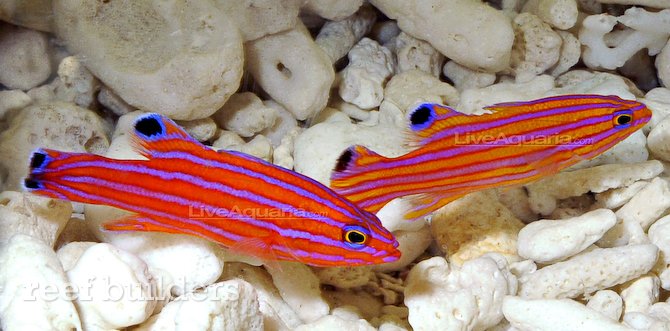The red candy basslet is the latest mystery surrounding Liopropoma carmabi, a fish which is arguably the most highly sought after reef basslet. Although we have seen several images of reddish colored candy basslets in the past, we usually chalked their color up to color balance of the camera and/or the effects of captive conditions. It was not until LiveAquaria received a wild red candy basslet specimen last week that we learned of the existence of red L. carmabi from a specific collection location.
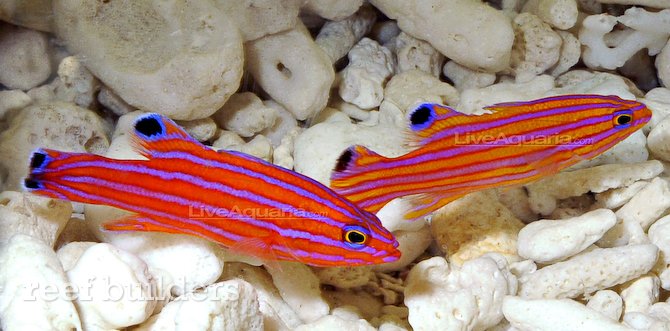

The red candy basslet is said to be collected in Bonaire, about 50 miles East of Curacao (where the majority of L. carmabi are caught) and there is at least one account that Bonaire Red Candies may be found in slightly shallower water than the rebreather-depth Curacao candy basslets. If the candy basslets from Bonaire are indeed living in shallower water than their Curacao counterparts, it stands to reason that perhaps they have access to a novel food source with a higher concentration of red pigment, the likes of which may color their predators red. Continue reading for lots more eye candy including an account of a yellow/gold candy basslet quickly turning to orange in captivity.
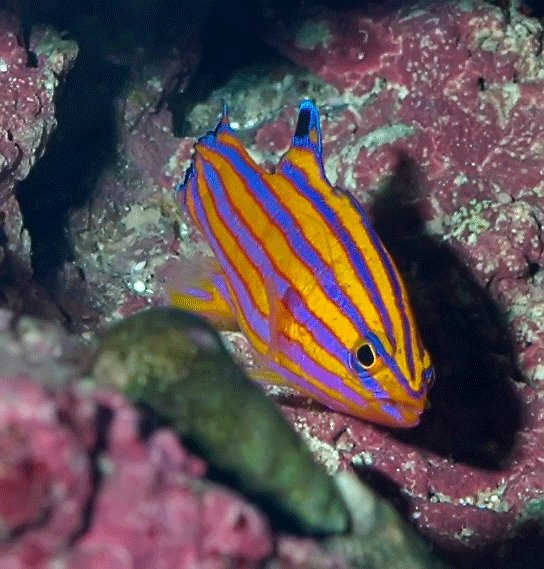
Above and below you’ll see photographs of the same Liopropoma carmabi specimen which was photographed in September 2009 and again in January 2010. The difference in the color change from yellow/gold to orange is quite dramatic. Dr. Joshi feeds ordinary fish foods such as various mysis shrimp and the fish is occasionally fed with red color enhancing Cyclop-eeze.
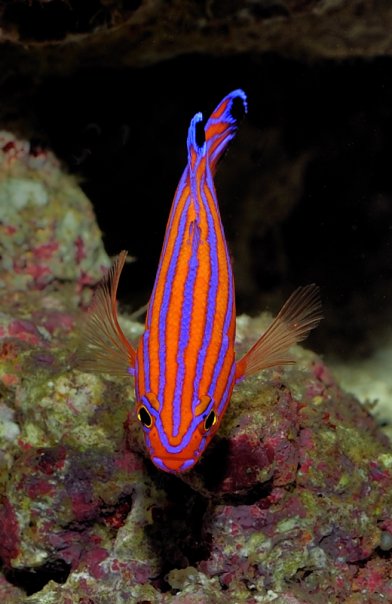
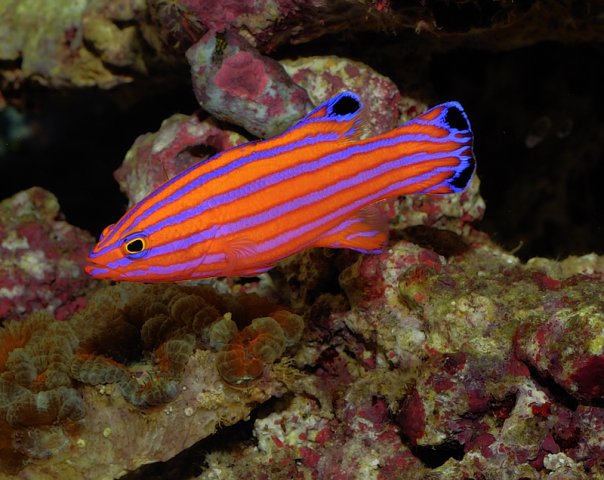
When comparing the orange captive candy basslet to the fresh-caught red one in the image below there is still significant difference in color of the body and the stripes. Not only is the body of the fresh wild specimen redder, but the stripes also appear more blue than violet, a feature which is most apparent in the very first image above. So is the red coloration of the red candy basslet genetic or conditioning?
The one hold-up we have is that if LiveAquaria only received one red candy basslet in a shipment of normal colored specimens, then that would suggest that a genetically red specimen of L. carmabi might have drifted as a larvae into the waters where candy basslet populations are genetically yellow/gold.
Further supporting this claim is the more blue appearance of the stripes which should be much less affected by eating food items that are rich in red pigments. Although we can’t be sure what is the true nature of the red candy basslet, it’s nice to have some variety in even the rarest of reef fish. What do you think? Is the red Candy basslet a product of nature or nurture?



